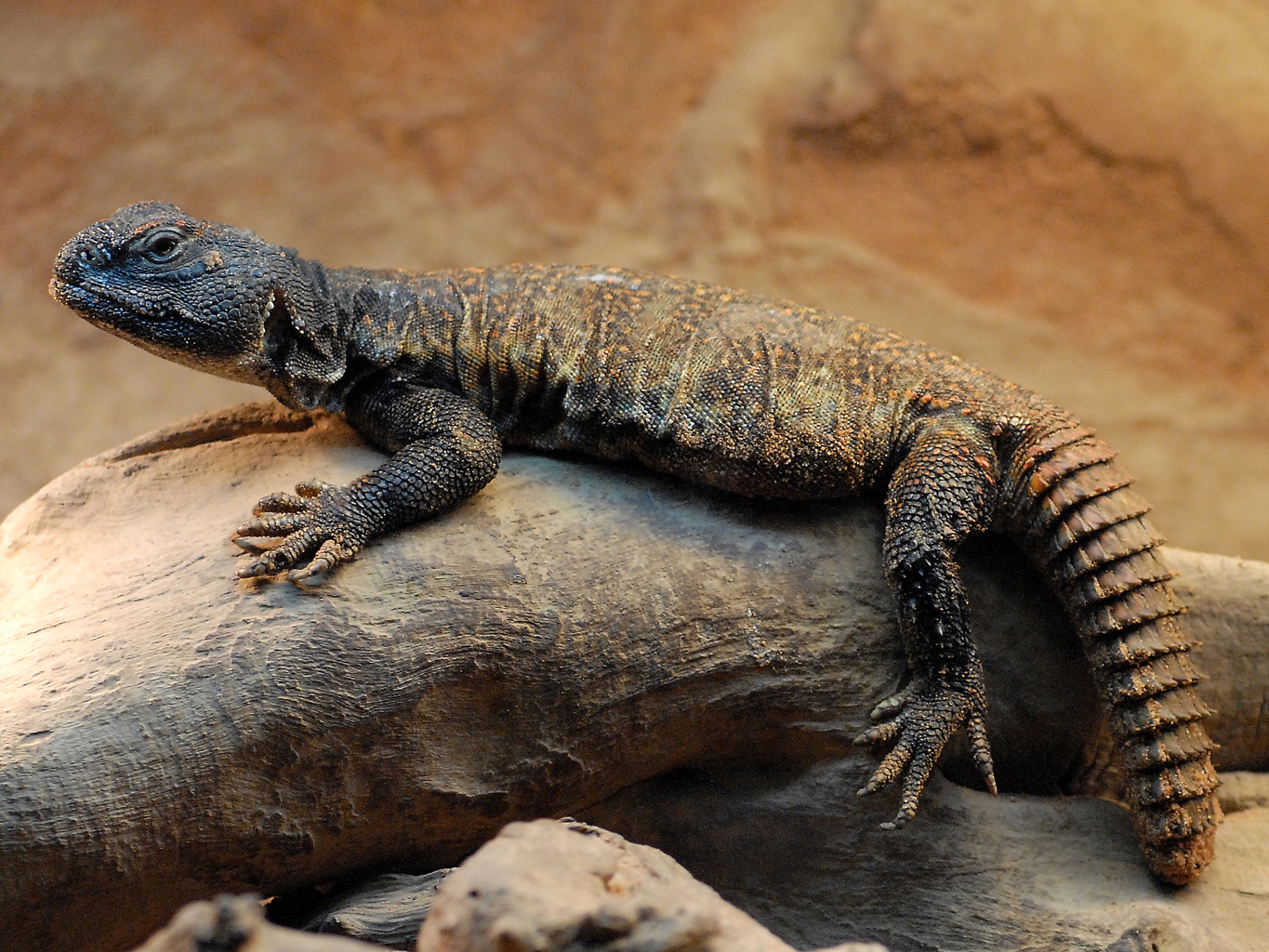|
Agamidae
Agamidae is a family containing 582 species in 64 genera of iguanian lizards indigenous to Africa, Asia, Australia, and a few locations in Southern Europe. Many species are commonly called dragons or dragon lizards. Overview Phylogenetically, they may be sister to the Iguanidae, and have similar appearances. Agamids usually have well-developed, strong legs. Their tails cannot be shed and regenerated like those of geckos (and several other families such as skinks), though a certain amount of regeneration is observed in some. Many agamid species are capable of limited change of their colours to regulate their body temperature. In some species, males are more brightly coloured than females, and colours play a part in signaling and reproductive behaviours. Although agamids generally inhabit warm environments, ranging from hot deserts to tropical rainforests, at least one species, the mountain dragon, is found in cooler regions. They are particularly diverse in Australia. This gr ... [...More Info...] [...Related Items...] OR: [Wikipedia] [Google] [Baidu] |
Uromastyx
''Uromastyx'' is a genus of lizards in the family Agamidae. The genus is native to Africa and the Middle East (West Asia). Member species are commonly called spiny-tailed lizards, uromastyces, mastigures, or dabb lizards. Lizards in the genus ''Uromastyx'' are primarily herbivorous, but occasionally eat insects and other small animals, especially young lizards. They spend most of their waking hours basking in the sun, hiding in underground chambers at night time or when danger appears. They tend to establish themselves in hilly, rocky areas with good shelter and accessible vegetation. Taxonomy The generic name ''Uromastyx'' is derived from the Ancient Greek words ''ourá'' (οὐρά) meaning "tail" and '' -mastix'' (μάστιξ) meaning "whip" or "scourge", after the thick-spiked tail characteristic of all ''Uromastyx'' species. Species The following species are in the genus ''Uromastyx''.. www.reptile-database.org. Three additional species were formerly placed ... [...More Info...] [...Related Items...] OR: [Wikipedia] [Google] [Baidu] |
Chinese Water Dragon
''Physignathus cocincinus'' is a species of agamid lizard native to southern China and mainland Southeast Asia. It is Common name, commonly known as the Chinese water dragon, Indochinese water dragon, Asian water dragon, Thai water dragon, or green water dragon. Chinese water dragons are large Diurnality, diurnal lizards adapted for dense Subtropics, subtropical forests replete with unpolluted streams. They are semi-arboreal, roosting at night on branches overlooking streams, which offer an escape route when the lizards are disturbed. Arthropods are their main source of food, though worms, snails, vertebrates, and plants make up a notable portion of the diet as well. Males are territorial towards each other and bear display features such as crests and jowls. Females are Oviparity, oviparous and reproduce sexually in the wild, though at least one captive Chinese water dragon is known to have reproduced via parthenogenesis. ''Physignathus cocincinus'' is related to Australasian liz ... [...More Info...] [...Related Items...] OR: [Wikipedia] [Google] [Baidu] |
Bearded Dragon
''Pogona'' is a genus of reptiles containing eight lizard species, which are often known by the common name bearded dragons or informally (especially in Australia) beardies. The name "bearded dragon" refers to the underside of the throat (or "beard") of the lizard, which can turn black and become inflated for a number of reasons, most often as a result of stress, if they feel threatened, or are trying to entice a mate. They are a semiarboreal species, spending significant amounts of time on branches, in bushes, and near human habitation. ''Pogona'' species bask on rocks and exposed branches in the mornings and afternoons and sleep at night, making them a diurnal species. Their diet consists primarily of vegetation and some insects. They are found throughout much of Australia and inhabit environments such as deserts and shrublands. Description The genus ''Pogona'' is in the subfamily Amphibolurinae of the lizard group Agamidae. Bearded dragons are characterized by their ... [...More Info...] [...Related Items...] OR: [Wikipedia] [Google] [Baidu] |
Lizard
Lizard is the common name used for all Squamata, squamate reptiles other than snakes (and to a lesser extent amphisbaenians), encompassing over 7,000 species, ranging across all continents except Antarctica, as well as most Island#Oceanic islands, oceanic Archipelago, island chains. The grouping is Paraphyly, paraphyletic as some lizards are more closely related to snakes than they are to other lizards. Lizards range in size from chameleons and geckos a few centimeters long to the 3-meter-long Komodo dragon. Most lizards are quadrupedal, running with a strong side-to-side motion. Some lineages (known as "legless lizards") have secondarily lost their legs, and have long snake-like bodies. Some lizards, such as the forest-dwelling ''Draco (genus), Draco'', are able to glide. They are often Territory (animal), territorial, the males fighting off other males and signalling, often with bright colours, to attract mates and to intimidate rivals. Lizards are mainly carnivorous, often b ... [...More Info...] [...Related Items...] OR: [Wikipedia] [Google] [Baidu] |



